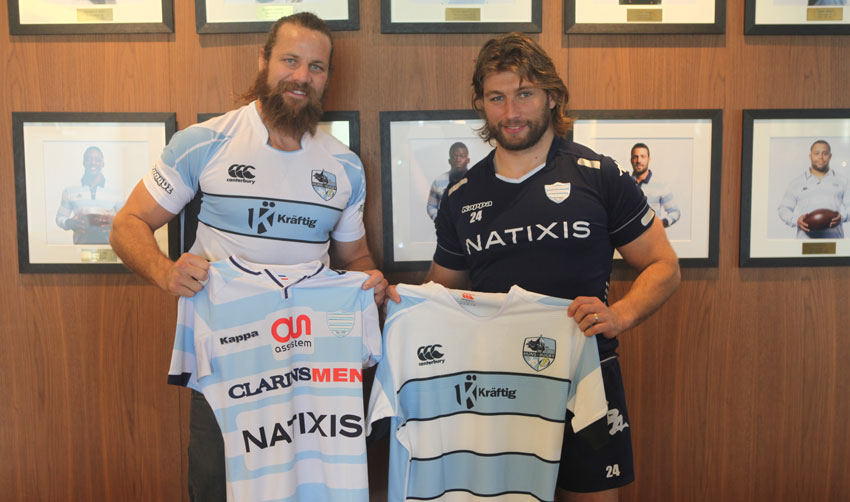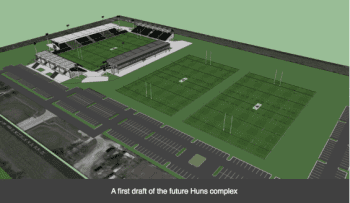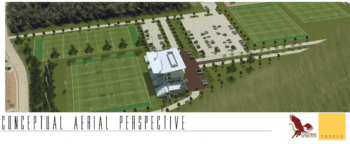
PHILADELPHIA, PA – As is likely apparent (by things like this and this), I am excited about PRO Rugby‘s inaugural season. Even with that excitement, it is clear to me that the future and success of professional rugby in America is not all on the shoulders of PRO.
Did we all see the article in the Austin American-Statesman that included: “[The Austin Huns] Are spearheading the formation of a regional pro league to begin play this fall. The league will include teams from the Dallas area, Houston, New Orleans and possibly Oklahoma City and likely the Austin Blacks, who are dominating the Division I-B Red River Conference this season. A May 8 meeting is scheduled to help finalize membership.”
What? Another professional league in America? That would make 2 created in 2016. What universe am I living in?

When I first saw the announcement about the Austin Huns announcing professional ambitions on March 2, I scratched my head. How are they going to do that? I largely dismissed the news. Then they announced a partnership with Racing 92. Hmmm.
In order to try and understand what was happening, I talked to Thierry Daupin, who is part of the Huns management group, and that conversation led to a conversation with Phill Camm, part of the management group of the Griffins – another club in Texas moving to be fully professional.
After those conversations, the announcement of the professional league makes sense to me. I haven’t talked to all of the clubs who will be or might be a part of the new league, but if they are close to the Huns and Griffins in their planning, this league can work.
Where Will the Money Come From?
A big part of the Hun’s plans is a planned complex. The Huns already own the land and have now had their feasibility survey done, and things look good.
The money for the complex comes from private investment. The investors are rugby people and already have a strong relationship with the Huns. The investment seems as much about establishing a legacy and growing the game as much as making money.
 The Huns will build and open the complex without the short-term financial pressure of needing to quickly repay investors.
The Huns will build and open the complex without the short-term financial pressure of needing to quickly repay investors.
The complex itself is a key feature to their plans to make money. When the complex is complete, it will be wholly owned by the club. That means that revenue from the complex – from things like rentals to other groups and concessions – all goes back to the club.
The land is already owned and is close to downtown Austin. It is a 34 acres and, in the initial drawing, will include 3 pitches. The final number for seating in the stadium has not been determined and the stadium might be built in phases. Generally speaking, 10,000 is the ballpark number (excuse the pun).
50-60% of revenue, it is expected, will come from ticket sales, merchandise, concessions, etc. Sponsorships will generate 40-50% of the revenue. They are already talking with current sponsors about expanding deals. Additionally, the club has partnered with Racing 92. It is possible that current sponsors of Racing 92 will end up being Huns sponsors.
The Griffins, similarly, have most of their money coming from private funding. Almost all of it from the three owners. They are in year 4 of a 5-10 year investment. Camm said it was absolutely a business venture and now rugby philanthropy.
The Griffins also have plans to develop land, though they do not own the land. The land is owned by the city of Allen, near Dallas; the Griffins would develop the land and sign a long-term lease. The development would include several rugby fields and a clubhouse and small stadium.
Right now, they have a partnership with the City of Allen and can access the field they play and train on whenever they need. They are working on making it possible to sell tickets again. Attendance is still modest, maybe 200 or so.

However, the same people who own the rugby club own The Den, a newly-opened high performance training center. This is not just a rugby facility, so The Den will also be a future source of revenue from memberships. Full time Griffins players are training there twice a day now. The Den will also have a pro shop from which to sell merchandise and can serve as the club’s HQ.
The Griffins are already paying players, so they’ve already shown they are not simply trying to dream their way towards professionalism.
The Future
The Huns and the Griffins both think that professional sides should be attached to larger clubs who also field amateur sides. In talking about the sense of community and staying true to rugby’s values, the Huns and Griffins mentions things that are similar to how PRO Rugby is trying to position itself. There is a difference, though, between working with local clubs and being one of those clubs. Professionalism in rugby in America could be an extension of the existing club game and not something separate from it.
With the size and population of America, it is possible that the country could support several regional, professional leagues, each with its own identity and personality.
A regional league will mean less money spent on travel and all clubs should be dealing with relatively similar weather.
The Huns have talked with clubs like Seattle Saracens and Old Blue about their future plans. For now, though, there is confidence that the Red River Conference can provide the competition and commercial opportunities the Huns and Griffins need. Dallas, Houston, Austin, New Orleans, Oklahoma City – these are all good-sized markets.
Brian Murphy of Old Blue was clear that their club is focused on the ARP (American Rugby Premiership) and working to improve the structures of the ARP. They also want to support rather than compete with PRO Rugby. From the Seattle Saracens, Kevin Flynn said, “Professionalism is not on our immediate horizon.”
PRO Rugby is sanctioned by USA Rugby as the “Elite” Competition, though the definition of “Elite” has not yet been made precise. Doug Schoninger, the CEO and man financing PRO Rugby, thinks that, “The best thing for rugby in America is a strong national team and that is best built through a strong, national league.” Schoninger stressed that he wants to do what is best for players, and he sees a national league that supports the national team as in the best interest of players. Schoninger did speak with Daupin following the article in the Austin American-Statesman.
USA Rugby Club Manager Erik Geib has attended several meetings with the clubs involved with the Red River Conference and plans to attend the next meeting on May 8. Geib thinks, “There is room for all of these things.”
When asked about the agreement between USA Rugby and PRO Rugby and if a regional league would infringe on that agreement, USA Rugby CEO Nigel Melville responded: “We are working with all clubs to raise their standards and become more professional and respect the hard work that is going on in our clubs and this is reflected in the quality of the play this year. PRO Rugby is our only sanctioned fully professional league currently, if others want to discuss professional leagues with us, we are happy to do so. In the future their will be tiers of professional rugby as there are in other countries.”
Professional rugby is happening in America. It is here and it is not going away. A successful professional league is inevitable, though its precise shape may not be fully determined. Speaking to Daupin and Camm, the work that the Huns and the Griffins are doing seems to me good for rugby in America.
The post has been updated to include comment from Old Blue, Seattle Saracens, PRO Rugby, and USA Rugby.
Please feel free to comment below, look for and “Like” our Facebook Rugby Wrap Up Page and follow us on Twitter@: RugbyWrapUp, Jake Frechette, Junoir Blaber, Ronan Nelson, Jamie Wall, James Harrington, DJ Eberle, Cody Kuxmann, Nick Hall, and Declan Yeats, respectively.

